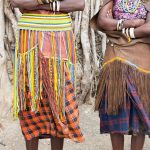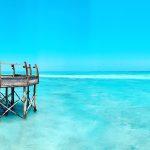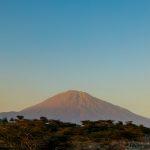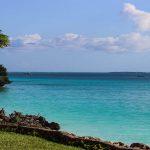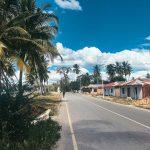The very name of the main island of Zanzibar reflects a central core element of its history. The name ‘Unguja’ means ‘transit’, and from the earliest dates of its recorded history, this little island has attracted a remarkable number of visitors to its shores, and borne witness to an exceptional exchange of foreign goods.
Zanzibar Island’s History
Zanzibar in the Early Years
The early history of Zanzibar is mainly reconstructed from early writings, stories and intelligent supposition, often making it almost impossible to disentangle the truth from a rich web of myths and legends. However, it is likely that the first inhabitants of the islands were descendants of the first known example of hominoid man, as discovered in Olduvai Gorge in mainland Tanzania, who journeyed to the Zanzibar archipelago in dugout canoes during the Neolithic period of the late Stone Age, in around 4000BC.
Then it is known that travellers from the ancient kingdoms of Sumeria, (6000-3000BC) Assyria (2000-612BC), Mesopotamia and Egypt travelled and traded with the East African coast from this time on, and it is probable that Zanzibar was known to some or all of these early civilisations. It is thought that the Phoenicians discovered Zanzibar and Kilwa on their journey to Sofala in around 1000BC, in present-day Mozambique, and in subsequent centuries these trade routes strengthened and developed into a powerful commercial network that extended to include the Silk Route trade from China to India.
Through the course of the 1st century AD, a regular pattern of trade was established between the coasts of Arabia and East Africa. Dhows would sail on the Northeast monsoon winds from the Kingdom of Saba, or Sheba, bringing beads, porcelain and Chinese silks, and return with the Southwest monsoon laden with gold from Sofala, and slaves and spices, ebony, ivory, indigo and tortoiseshell from the lands of ‘Zinj el Barr’, as they called this Indian Ocean coast. The name is thought to have been derived from the Persian word ‘zangh’ for black and ‘bar’ referring to the coast, meaning ‘Coast of the Black’.
The Greek astronomer Ptolemy describes the ‘Zenj’ people in his historical account of the second to the fifteenth century, ‘Geography’, as tall, dark and fearsome. The English explorer Richard Burton held a more romantic notion that ‘Zanzibar’ was derived from the Arabic ‘Zayn za’l barr’, meaning ‘Fair is this Isle’, although the name was used to describe the whole East African Coast until the late 15th century.
Word of the travels of sailors and traders soon spread far and wide, and it seems that the 9th-century legend of Sinbad the Sailor, as told in The Thousand and One Nights, was inspired by circulating tales of the land of Zinj. Sinbad was a sailor on merchant ships which set out on typically long voyages that bore no guarantee of safe return, but he made it back to the shores of Mesopotamia laden with gold and ivory, after intrepid encounters with kings, elephants and apes.
These distant lands of abundance became an attractive destination for those seeking to begin a new life abroad, and the population of the land of Zinj began to be defined by a growing number of immigrants from different lands.
A number of legends coincide with a mass emigration from Shiraz, Persia, in around 975 AD. The reasons for this are varied, and it followed the religious upheavals incited after the death of the prophet Mohammed, but it resulted in the popular legend telling how the Persian king, Ali Ben Sultan Hasan was responsible for the first major Arab civilisations along the East African coast. He is said to have had a dream in which a rat with iron jaws gnawed and destroyed the foundations of his palace, which he interpreted as a sign of the imminent disintegration of his dynasty.
Despite the mockery of the court, he galvanised his six sons and an entourage for each into seven vast dhows and they set for ‘Zinj el Barr’. It is said that each of the dhows landed at different points of the coast, including Zanzibar, Kilwa, Tongoni, Mombassa and the Comoros Islands, all known to be points of early Shirazi settlements.

Immigration and Settlers from the East
During the 7th century AD, the rise of Islam in Arabia brought war and repercussions of unrest throughout Persia, and the fruitful lands of Zinj became an attractive destination for those wishing to escape the hardships of home. There was a gradual influx of Omani and Shirazi settlers from Arabia, and Persia and the outcome of the mix were not always peaceful as they established land ownership.
Wars and raids elsewhere on the African continent were also causing different tribes on the mainland to seek new land elsewhere, and throughout 1000 AD Bantu tribes continued moving eastwards and settling along the coast. They began to call themselves ‘Sahil’, from an Arabic word meaning coast, and so the mix of African, Arabic and Persian languages and people on the coastline developed the evolution of the Swahili civilisation.
The foundations of the first mosque on Zanzibar Island can still be seen at Kizimkazi, and are attributed to the first Shirazi settlers described above. The Mihrab, or alcove to which prayers were directed, bears a Kufic inscription of the date 500 AM, equivalent to 1107 AD, and by this time there was the widespread adoption of Islam among the mixed local groups.
The Portuguese
Meanwhile, the Portuguese had been earnestly seeking a sea route to India, and charting routes around the irritatingly large continent that stood in the way. Finally, in 1498, the notorious seafarer Vasco da Gama rounded the Cape of Good Hope and made his presence known along the East African coast.
The islands of Zanzibar and the port of Mombassa proved an invaluable base for preparations and supplies for the long trip to the Far East, and they built garrisons that were soon followed by a push for Portuguese rule of the coastline in 1503. Capturing twenty Swahili dhows, shooting a number of islanders and forcing the Swahili Mwinyi Mkuu, the island chief or ‘Great Lord’ of Zanzibar to become a Portuguese subject rendered Zanzibar one of the new Portuguese territories along the East African coast.
By 1509 they occupied the islands of Zanzibar, Pemba and Mafia. Their tactics of burning, looting and plundering were not popular, and their Zanzibari subjects tended to respond variously with hostility and resistance until there developed a form of truce as the Portuguese continued to assist in protecting against other Arab or African invasions.
The fort at Chake Chake on Pemba was built by the Portuguese in 1594, along with other fortifications along the coast – developed in a bid to withstand widespread Omani uprisings – but they were not enough. Gradually the Portuguese territories were lost; Hormuz to the Persians in 1622, and Muscat to the Omanis in 1650. In 1652 the Sultan of Oman mobilised his troops to the aid of the Mwinyi Mkuu, and the Omanis raided the Portuguese settlement on Zanzibar and burnt most of the garrison on Pemba. The islands became a protectorate of the Omani empire.
Nevertheless, the Portuguese left a legacy of now staple imported foodstuffs, such as cassava and cashews from Brazil, maize, avocados and guava. They also encouraged the use of iron nails for boat building, a departure from the ‘sewn boats’ of yore, and showed how to use the dung for cultivation. They were even indirectly responsible for the evolution of the kanga, (described below under Shopping.)
During this mayhem, the British were quietly doing what the Portuguese had originally set out to achieve. The first British ship, the Edward Bonaventura, dropped anchor at Zanzibar in 1591, under the command of Sir James Lancaster. They befriended the Mwinyi Mkuu, who supplied them with water and food, and thereafter a number of British ships stopped at the island to restock on route to trade in India.
Following successive struggles, the Portuguese were forced to retreat as far south as Mozambique, and by 1698 the Omani Arabs had regained firm control.
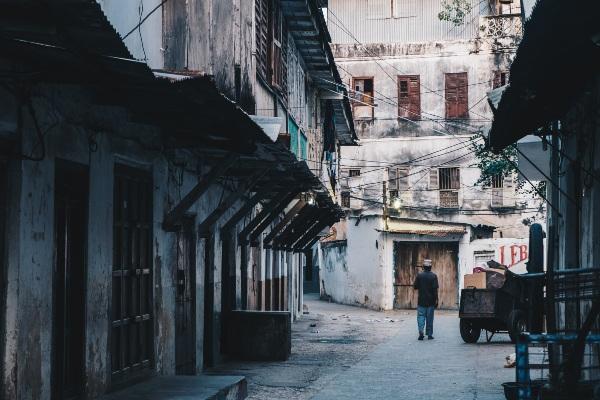
The Reign of the Sultans
The Sultan of Oman originally ruled from Muscat, from where he appointed governors and strengthened his position on the islands by ordering fortifications such as the Arab Fort to be built on the harbour, over the old Portuguese foundations. Oman was by now a powerful trading nation, relying on dates as a major crop export. They were in need of cheap labour, yet forbidden by Islam to use Muslims as slaves; instead, they imported Africans from the mainland by boatload.
The majority of trade along the East African coast began to be routed through Zanzibar, and during the 1820s Sultan Seyyid Said bin Sultan – the sultan of Oman since he was fifteen years old – instigated the first stone buildings of what would later become Stone Town. Sultan Said demonstrated a shrewd mind for business and advance and was excited by what was proving to be a profitable island investment.
He made a couple of preliminary visits to the islands before deciding to transfer the seat of his sultanate from the hot and contentious capital of Oman to the more conducive climes of Zanzibar in 1832. He found that trade had already been established in ivory and slaves, and cloves had begun to be planted, and he strongly encouraged all of these trade possibilities further. He signed commercial treaties with a number of western powers, beginning in 1833 with the United States, and allowed the first foreign consulate to open in 1837. His ambition was great and especially inspired by his intention to centralise trade of all of East Africa through the little island of Zanzibar.
When Sultan Seyyid Said bin Sultan arrived in Zanzibar for the first time in 1828, he recorded that Unguja Island was broadly divided into territories of two distinct local tribes. The north of the island, including Tumbatu island, was inhabited by the WaTumbatu, ruled by a matrilineal queen called the Mwana wa Mwana, and the south by the Hadimu. ‘Hadimu’ seems to be from an Arabic word meaning ‘slave’, although the Arabic immigrants that employed this nickname failed to conquer these islanders, or to take them as slaves.
In fact, the Hadimu apparently employed their own slaves from the mainland, and it is likely that they were already converted to Islam. The Hadimu claimed descent from the Shirazi immigrants who had settled on the southern shores of the island, but in reality, were a mix of people including many immigrants from the mainland. Whatever their origins, the Hadimu had one ruler, of Shirazi origin, known as Mwinyi Mkuu; ‘The Great Lord.’
When Seyyid Said began to transfer the sultanate seat it was necessary to acknowledge the local chief and negotiate terms of power. The sultan employed the most likely means, that of extravagant promises of a generous pension that was never paid, although the Mwinyi Mkuu retained some rights of sovereignty.
The Mwinyi Mkuu known to Seyyid Said was Hassan bin Ahmed, the ruler and owner of the stone palace at Dunga, the impressive ruins of which can still be visited. Negotiations with the Sultan resulted in Hassan bin Ahmed promising to share half of his labour force and collecting taxes on the Sultan’s behalf, although he soon compensated for his unpaid pension by keeping half the profits for himself. But as the Sultan’s demand for labour grew with the expanding cultivation of cloves and other economic crops, so did the demand for labour from the Hadimu.
Seyyid Said’s successor, Sultan Majid, incurred a clash of interests with a successive Mwinyi Mkuu, Muhammad bin Ahmed, resulting in the imprisonment of the latter. Muhammad bin Ahmed commonly referred to as Sultan Hamadi, seems to have been imbued with greater powers than most.
Legend has it that the ‘Great Lord’ was either exiled or escaped to the mainland, and subsequently, the islands suffered a terrible drought. The drought lasted for three years until the islanders stepped up their petition against the Sultan to return their chief. Whether the Sultan bowed to pressure or was struggling with his tax collection and labour demands, the leader was found, recalled and reinstated, and the island was once again blessed with rain.
On his return, the Mwinyi Mkuu fortified his fine house at Dunga, which eventually became his permanent dwelling. He then pulled off an impressive political manoeuvre when he married the hereditary leader of the Tumabatu tribe, the powerful Mwana wa Mwana, and so united the smaller ‘kingdoms’ of the Zanzibar archipelago.
In essence, the Mwinyi Mkuu became a nominal leader for all local matters, while the Sultan looked after the more profitable trade and international affairs. The transfer of the sultanate from Oman to Zanzibar in 1832 brought an era of prosperity to the islands and the Sultanate, probably far greater than that which they would have achieved in Oman.
Sultan Said saw and exploited the mercantile promise of such a fertile island at the centre of the East African trade routes, based on the profitable extortion of slaves and ivory from the interior. While levying large taxes and taking their share of all transactions on their shores, the Sultans also developed vast and profitable plantations, originally of coconuts and subsequently cloves, and built impressive palaces reminiscent of Oman in its prime.
Sultan Said was largely responsible for the prosperity of the clove plantations in Zanzibar, after initially seizing the small plantations owned by Saleh bin Haramil al Abray who had brought the first twenty trees to the islands in 1813. The sultan then decreed that every plantation owner must plant and tend 3 clove trees to every coconut palm, or risk his land being confiscated. With such determined efforts, he achieved a leading position in the world market for clove production by the end of his reign.
Among the widespread estates and plantations, the first sultan built himself town and country palaces and installed his wives, advisors, eunuchs, slaves and a vast harem of concubines of mixed nationalities. The women were Arabian, Persian, Turkish, Circassian, Swahili, Nubian and Abyssinian, and their lives, languages and children mixed together in stately splendour beneath the sultan’s roof. The sultan divided his time between town and country, and when in Stone Town resided at Beit il Sahel, now the Palace Museum, which was later joined to a new palace called Beit al-Hukm by a suspension bridge that hung over the roofs of the Persian baths.
One colourful source for first-hand information regarding the lives of the Sultans and their families is written by one of his many daughters, Princess Salme. Her Memoirs of a Zanzibari Princess provides a colourful account of her experiences of early life among the harem and within the various palaces and residences of the Sultans.
Princess Salme was christened Emily Reute when she converted to the Christian faith in order to marry her lover, a German merchant whose house in Zanzibar neighboured her own. Her memoirs are written from the perspective of her subsequent exile in Germany, and span the reigning years of the first three Sultans of Zanzibar.
Salme was brought up in the oldest of the Zanzibari Palaces, Beit il Mtoni, on the seafront about 7km north of Stone Town. She describes the palace when its elegant balconies and rooms were filled with a regal entourage of innumerable courtiers and concubines, and the courtyards were home to an exotic menagerie of ostriches, peacocks and gazelles. But when she returned to the palace in 1885 after nineteen years of exile, she was aboard one of the five German warships that docked in Zanzibar harbour with their guns trained on the Sultan’s palace. Her Stone Town home of Mtoni was already in ruins, and to this day its walls stand in a dilapidated state and are washed by the waves of the encroaching sea.
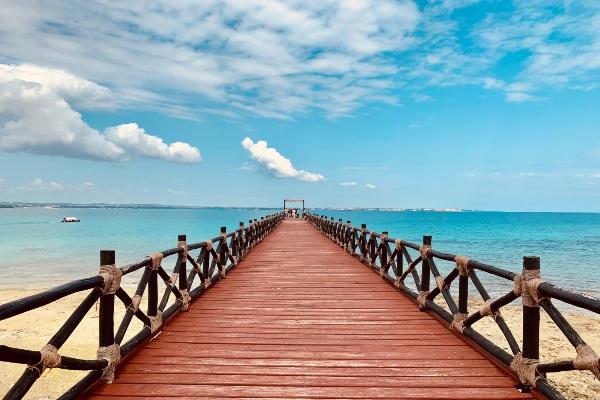
Sultan Majid
When Sultan Said died at sea in 1856, the estimated population of Zanzibar was 25,000, rising to 40,000 during the northeast monsoon when the town became full of opportunistic merchants from the Persian Gulf. The first sultan of Zanzibar died leaving thirty-six children, and his son Majid took on the role of Sultan, although his younger brother Baghash had ideas that he should take the position himself.
Barghash had been with his father on the boat from Oman to Zanzibar when the old Sultan died and resolved to flout the traditions of Islam and bring the body back to the island for a secret burial; so allowing him time to overthrow his brother. Although this attempt was discovered and quashed on arrival, the dream did not die, and in later years Barghash plotted a conspiracy to usurp his ruling brother for good.
In truth, neither brother was the rightful heir, as Said’s eldest son Thuwain, sometimes called Tueni, was alive and ruling in Oman. It was then negotiated, (with British assistance, on the grounds that they had interests in the Port of Oman and their help was yet another bargaining chip in their efforts to end the slave trade), that Majid should pay his elder brother in Oman an annual sum. But one payment was enough for Majid, who felt such an arrangement made him seem just a vassal of Oman. Trouble flared up later in 1859 when the belittled Sultan Thuwain set sail to recoup his payments, but was met and pacified by a British Cruiser on an unshakeable mission to protect their trade route to India.
Two years later the British arbitrator and Governor General of India declared Zanzibar and Oman independent states, and the British and French, who also had a consul in Zanzibar, drew up the Anglo-French agreement in recognition of the sultan as independent sovereign over the East African territories.
But for Sultan Majid fraternal struggles continued at home too, where his younger brother Barghash continued to connive for the throne. When his plot was at its height, Majid was forced to imprison Barghash, and despite his sisters’ cunning plan to free him by sneaking past the guard and dressing their brother and his chief as women, the usurper did not succeed.
Instead, once again, the British intervened with a few well-timed shots fired from their gunboat. They then removed Barghash to Bombay in British India and there he remained for the duration of his brother’s rule. On Majid’s death, in 1870, the exiled prince returned to take up the position he had so coveted.

Sultan Barghash
Sultan Barghash bin Said was a sultan with a powerful sense of grandeur and self-importance, who suffered the great indignity of an age when the power of the Sultan was being smartly curtailed by the interests of foreign powers. His feisty temperament towards those who seemed to stand in his way did not mellow much with age, but he did retain conveniently amenable terms with the British, albeit in response to their formidable navy in his harbour, and built himself a fine collection of palaces.
He had Chukwani Palace built eight miles south of the town in 1879, as a house in which to recuperate after illness, as the air here was supposedly more healthy. Judging from numerous unpalatable descriptions of Zanzibar Town at this time this was most likely true. (see Impressions of the First Explorers below). He followed the completion of the recuperation house with a new country residence just north of the town, and south of his old childhood home at Mtoni.
The new Marhubi Palace was an elaborate expression of sultanate opulence and included enough Persian baths and balconies to amuse and contain his extensive harem. Typically constructed in coral and wood, it was mainly destroyed by fire in 1899, although the basic stone structure and bath houses remain as ruins. Then in 1883, he built the House of Wonders as a ceremonial palace, designed by a British Marine engineer. and the tallest building constructed thus far in the history of East Africa. The ornate fretwork and delicate style of this 4-story palace show a distinct influence of ornate Indian architecture, that must have impressed Barghash during his exiled years.
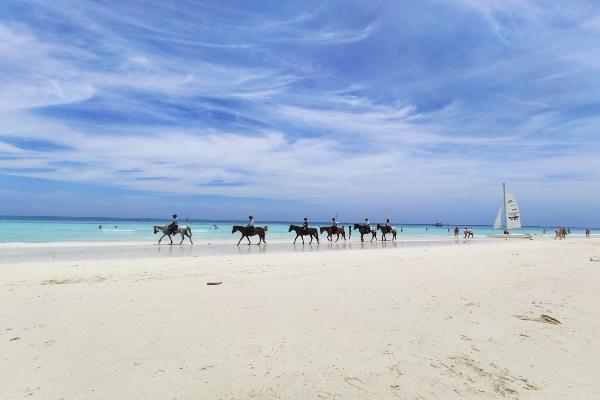
The Slave Trade
Slave trading on the African continent was brutal, and violent, and continued through many long centuries. Thousands of slaves were rounded up on the mainland and brought to Zanzibar Island, where they were sold and either employed on the Sultan’s plantations or shipped around the world. It was domination wrought by the power of arms, muskets and swords, controlled and carried out across the continent by fearsome caravans of slavers who opened up dangerous routes through the interior.
The effects of the trade were incalculable. Tribes were scattered and relocated, while others raided their neighbours for valuable others to trade. Dingy, windowless cellars still exist beneath the Anglican Cathedral – originally the site of the central slave market on Zanzibar Island – and serve as a reminder of the horrors of this trade in human lives. Similarly, a deep, dark pit at Mangwapani has an underground tunnel to the sea, dating from the days of illegal trading.
The anti-slavery campaign had gained greater momentum since slavery was abolished in the British Empire in 1807 and later was punishable by exile to Australia. The Americans followed suit in 1808, and France and Germany thereafter, but in East Africa, slaves remained a powerful source of income.
The Sultan finally agreed to an anti-slavery treaty in 1839 that banned the transport of slaves on either side of the ‘Moresby Line’, a demarcation on the map that led directly from the most southerly point of the Sultan’s domain in Mozambique to Diu Head in India. The treaty also banned the sale of slaves to Christians and gave the British the right to confiscate any dhows carrying slaves in illegal waters.
The trade between Zanzibar and Oman remained unchanged, and the demand for slaves continued to increase with dramatic effects across the mainland. Thousands of slaves continued to arrive on the shores of Zanzibar, and the Sultan was anxious to protect his considerable interests – which covered over 1 million square miles of the continent and provided him with a sizeable revenue – while the British shored up their efforts to diminish the trading limits.
The first Sultan Said retained good relations with the British, who sent the first British consul, Captain Hamerton, on a diplomatic mission to Zanzibar in 1841. Said felt that the European counterparts might be a worthwhile ally in his defence and fight against Mazrui Arabs in Mombassa and Oman. Indeed, they did agree to help, but as the Industrial Revolution was at its height and there was a great demand for raw materials that the wide African Continent could provide, the British negotiated assistance in terms of a contra-deal in return for the Sultan’s assistance in their fight against the slave trade.
Under considerable pressure in 1845, the Sultan signed a second treaty presented by the British Consul Captain Hamerton, this time reducing slave trade to only between the latitude lines within the limits of the Sultan’s dominion on the coast, and effectively preventing legal transport to Oman. But the illegal trade continued to flourish.
When the body of Dr David Livingstone, a hard-fighting hero in the battle against slavery, arrived in Britain in March 1873 after his death on African soil, the British were further inspired to honour their previous attempts to put an end to slave trading. Sir Bartle Frere and the increased might of the British Navy were sent in a stately retinue to the ports of Zanzibar to persuade Sultan Barghash to back down on the issue of the slave trade, and although they succeeded in engaging him in endless treaties and discussions, the Sultan still sidled around the issue of closing the slave markets in his dominions.
Sir Bartle Frere was driven to a furious frustration and handed negotiations to Sir John Kirk, whose job was made considerably easier when he was given the full support of the British Navy to support his discussions. Kirk was able to tighten his grip around the British ‘support’ of the Sultan, and in such a way encourage Barghash to post a historic proclamation on the doors of the Customs House. This notice officially ended the trade of slaves by sea and in all slave markets in East Africa.
By the time Stanley returned to the islands in 1874 he found the Zanzibar slave market had been abolished, and the designs were being drawn up for a new Anglican Cathedral where it had once stood.
The enforcement of the abolition of slavery in the early years of the twentieth century was supervised by Sultan’s governors, Liwalis, Muslim Judges, Kadhis, and British colonial officers. Enforcing the new laws was sometimes brutal, and the British navy fought and lost many lives in combat with lawless Arab Slave traders.
With the decline of the slave trade, ivory became one of the main commodities of trade. Tusks from the interior were carried by human porters, although now it is hard to remember how huge the tusks of old African elephants grew before this trade annihilated them; some were so large that they required four men to carry one between them.

After the Slave Trade
Among others, the journalist Henry Morton Stanley noted that Sultan Barghash was not faring well as a result of the political struggles that were fast diminishing his dominion and power. In 1877 Barghash engaged in talks with Sir William Mackinnon to provide Britain with a seventy-year ‘lease’ over the mainland on the basis of their understanding, but these came to nought in the following decade as the British and German colonialists simply took the land and divided it up between them. By this time the Sultan was in a bad way, afflicted by elephantiasis, consumption and depression.
One of his senior advisors irritated him so greatly by showing too much friendliness to the German military arrogantly arrayed around the Sultan’s harbour, that Barghash had him poisoned. But the Sultan himself had not much longer to live, and in March 1888 he died and was succeeded by his brother Khalifa.
Despite the claims that Khalifa was mentally unstable after suffering six years locked in an underground chamber by his brother, the colonial powers championed his rights. They quickly drew up treaties, notably including the German East Africa Company’s claim to a fifty-year lease over the coastal territories.
The Anglo-German agreement of 1890 defined mainland Tanzania as a part of German East Africa, and Zanzibar a British protectorate with the Sultan as sovereign, implemented until after the Second World War. This occurred in conjunction with the British campaign to end the slave trade and prevent German take-over.
The First European Explorers
Geographical maps of the great African continent were a point of great discussion in Britain in the early years of the 19th century, mainly due to the large blank area that filled the centre, labelled ‘Unknown Parts’.
The Association for Promoting the Discovery of the East African Interior was formed in Britain in 1788, and this joined later with the Royal Geographical Society and directed great effort at determining the answers to the riddle. Much of the coastline and North and South were comprehensively charted, and yet the centre was a mystery with only a few clues pieced together from the work of classical geographers such as Ptolemy and some Arab manuscripts. It was a source of much academic argument, study and interest, although for a long while little was actually done to determine the truth.
Meanwhile, another society was actually sending explorers to the great continent for the purposes of education, although this time the learning was taken with them and deployed to the natives of the land, rather than brought back home. This was the Church Mission Society in London, which was responsible for posting the first white missionary and explorer to East Africa. The intrepid man was Johnann Ludwig Krapf, a Protestant Doctor of Divinity from Germany.
Zanzibar provided the ideal starting point for journeys into the interior, as the Sultan was the nominal sovereign of the uncharted lands beyond and it was the meeting point for the Arab caravans to and from the interior. Here the explorers were equipped for their journeys and exchanged money for the beads and cloth that would be their currency on the mainland.
Johann Krapf arrived in Zanzibar with his wife in January 1844, and from here equipped with porters and guides for his expedition to Mombassa. Despite his enthusiasm at finding ‘innumerable heathens’ to potentially convert, the way ahead was arduous and full of suffering, not least from the incalculable ills of Malaria.
Two years later the CMS sent another missionary to join him, a Swiss named Rebmann. Their travels through present-day Tanzania brought them to the mystical mountain of the Djagga, or the ‘Mountains of the Moon’ described by Ptolemy and much debated in London academic circles. The missionaries’ first-hand reports fuelled yet further heated arguments about the existence of Kilimanjaro.
The Royal Geographical society finally took steps to follow the missionaries and determine some truths for themselves. In 1856 they funded an expedition led by a ‘clever and adventurous Captain’, Richard Burton, accompanied by John Hanning Speke, also an army officer, to find Mount Kilimanjaro and determine the source of the Nile. Burton and Speke arrived in Zanzibar to equip for their adventure and set out following the slave caravan route southwards towards Lake Tanganyika.
These early explorers were followed by the already famous explorer and a missionary, Dr David Livingstone, who had made two previous expeditions into Southern Africa. The Royal Geographical Society and Foreign Office raised capital for him to continue their geographical investigation, and he agreed to go, ‘ not as a simple geographer, but as a missionary, and to do geography on the way’. He was also driven by a desire to somehow put an end to the slave trade – the horrors of which he had witnessed on his earlier expeditions.
Livingstone arrived in Zanzibar in 1866, when the traffic of slaves was estimated between 80,000 – 100,000 a year, despite the various treaties agreed with the British. He was followed by journalist and explorer Henry Morton Stanley who arrived on a boat from Bombay in 1871, in hot pursuit of his idol.

Zanzibar and Intrepid Explorers
Being in the habit of recording and relaying information about their discoveries, the notes of these early explorers are an interesting source of information about the island as seen through the eyes of Europeans in the early 19th century.
On Stanley’s first visit he noted that the sea was a startling ‘cerulean blue’, and the coastline was awash with variegated greens of mango, tamarind and coconut palms. Stanley recorded ‘as [he] sailed along the coast…his nostrils were assailed by natural scents…but the sweet sensuousness of nature soon gave way to man-made pollution’.
This last is in keeping with Livingstone’s rather brutal observations of the island, in which he famously states it would be better named ‘Stinkibar’ for all the filth and pollution that had accumulated along the streets and beaches of Stone Town. Not only was all the rubbish and sewage allowed to accumulate in the narrow streets, but it was common for the dead bodies of slaves to be dumped on the beaches. The decomposing mass became a haven for a number of vile diseases and ailments, and such reports give weight to Sultan Barghash’s decision to build country palaces for health reasons.
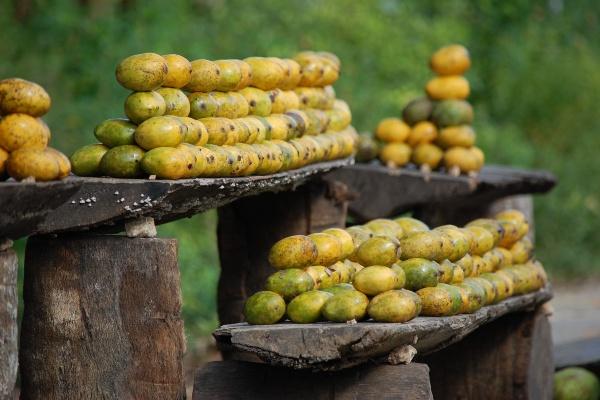
The Demise of the Sultanate
In 1896, following the death of Sultan Hamid bin Thuwaini, (1893-1896) Seyyid Khalid bin Barghash (son of Barghash), attempted to seize the Sultan’s throne, although the British had already nominated Hamoud bin Mohammed as their own choice of a successor. In response to the opposition, the British bombarded the coastal House of Wonders in what was later to become known as the ‘shortest war in history’. 45 minutes of continuous bombing from the harbour front was enough to convince the meddlesome young hopeful to desist.
Despite the affiliations to the British, the Sultan remained the absolute monarch and continued a lifestyle in the traditions of his predecessors – retaining four wives and a huge retinue of concubines and children, requiring his subjects to prostrate themselves in his presence and always having the final word. But Sultan Hamoud, (1902 –1911), was the last to enjoy such an opulent lifestyle before the Sultanate had to undergo dramatic reforms.
His successor, Khalifa bin Haroub, (1911-1960), experienced a marked change in the lavish opulence enjoyed by his ancestors during his long reign. Numerous democratic political reforms were introduced to lessen the autonomy of the Sultan, making him the figurehead of a constitution, and at the end of his reign elected Legislative Councils were introduced to deal with state affairs. Such was the demise of the last two Sultans of Zanzibar, although neither enjoyed their title for long. Abdullah bin Khalifa, (1960 –1963), suffered from cancer and died after just three years, and the last sultan, Jamshid Bin Abdullah, (1963 –1964), was forced to flee his island within months of his coronation.
He has since resided in England, receiving a modest annual payment from the British government in accordance with the terms of an earlier agreement which transferred the land rights of the Kenya Coast to them, previously belonging to the Sultan. He remains to this day tucked away in a suburb of Portsmouth, sharing his income among the retinue that accompanied him on his exile and a long way from the extravagant, ostentatious lifestyles of his forefathers.
Post Wars
The independent political development of Zanzibar really began after 1956, when six non-governmental members were elected to the Legislative Council.
There were two main political parties. The Zanzibar Nationalist Party, ZNP, had already been having been founded in 1955 as a development of the National Party of Subjects of the Sultan of Zanzibar, led by Sheikh Ali Muhsin Barwani, and had rapidly developed from a league of rural African peasants into a radical Arab movement which then failed to earn strong African support. Thus a second party was formed in response to the plight of the ZNP, this was the Afro-Shirazi Party, ASP, led by Abeid Karume, and intended to represent the Shirazi’s and the African majority.
The first elections were held in July 1957, and ASP won 3 of six seats with the rest going to independents. But the party split after the election, and many of its Shirazi supporters left to form the Zanzibar and Pemba People’s Party (ZPPP), this time headed by the Shirazi Sheikh Muhammed Shamte. Before the next election in January 1961 the Zanzibar and Pemba People’s Party formed a coalition with the Zanzibar Nationalist Party, resulting in a joint deadlock of votes for the ASP and the new coalition.
The results remained similar during the elections following the granting of self-government in June 1963. When Zanzibar was officially granted independence from Great Britain on December 19 1963, it was a constitutional monarchy under the sultan, with the Zanzibar Nationalist Party in power and Shamte at its head.
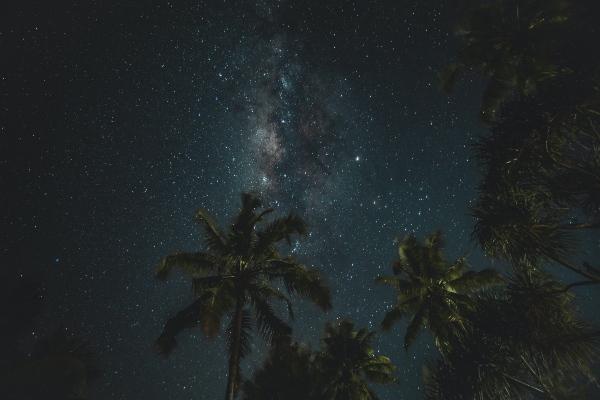
The Revolution
The supremacy of the Arab minority had begun to pall, and in January 1964 a small band of Africans rose up in a dramatic revolution against the Sultan and Arab domination. The violence was instigated by the cunning leadership of the self-professed ‘Field Marshall’ John Okello, an immigrant labourer from Uganda with a prison record and dubious past, who spread fear in the hearts of his African supporters by telling them tales of how Africans would be enslaved and their children slaughtered by the Arabs after Independence. On January 12th at 3 o’clock in the morning, Okello organised his followers to carry out surprise attacks, beginning with a raid on the Police Station armoury led by him and followed by others on the army barracks, the radio station and the jail.
The rebels planned to capture and kill the Sultan and certain politicians, and to incarcerate others, but the Sultan succeeded in fleeing the island with his family and a small entourage and, after being refused to land in Mombassa, flew to England from Dar es Salaam. For a while following, the Arab community suffered widespread conflict across the islands, in which an estimated 12,000 were killed, alongside approximately 1,000 Africans, and many fled the islands for their lives.
(Random interesting facts that I can’t find any space for – potentially fit alongside History, after the Revolution, as Farookh Bulsara (aka Freddie Mercury) and his family were forced to leave Zanzibar in 1963 along with many of Shirazi or Indian origin who were considered a party to the supremacy of the Sultan. – or with details of Zarathrustra)
Perhaps one of the internationally most renowned ex-citizens of Zanzibar was Freddie Mercury, lead singer of the rock band Queen. Mercury was originally named Farookh Bulsara and was born in Zanzibar in 1946 to parents of Persian origin, who had immigrated to Zanzibar via India.
His family followed the Zorastrian faith, into which he was initiated at the age of eight in the ceremony of Navjote. One of the many underlying beliefs of Zorastrianism is that celibacy and abstinence sap a man’s spirit and make him susceptible to evil. (see more on Zoroastrianism below, p. xxx) The rock star never forgot his Zanzibari roots, and included a very Zanzibari Swahili exclamation in the lyrics of Bohemian Rhapsody – probably his most famous song – when he calls ‘Bismillah’, meaning ‘In the name of God’. A possibly less known fact about Mr Mercury was his passion for collecting Zanzibari stamps; so great that he developed one of the most comprehensive collections, which, when valued and sold on his death was worth over $3,000,000.)
Okello reigned briefly as Leader of the Revolutionary Government but was expelled to the mainland soon after, and a new government formed with the ASP, led by Abeid Karume, as president of Zanzibar and chairman of the Revolutionary Council. Three months later, on April 26th 1964, an agreement was made between the leaders of Zanzibar and Tanganyika that the two would be officially joined and named the United Republic of Tanzania with Zanzibar.
The country was then renamed the United Republic of Tanzania on October 29th, in an agreement that allowed Zanzibar a great deal of autonomy. The constitution was later rewritten in 1965, and although this officially determined the Republic as a one-party state, there were two. TANU, led by Julius Nyerere, governed mainland Tanzania and former Tanganyika, and in Zanzibar, there was still the ASP. In 1977 Nyerere, now President of the Republic, merged TANU with ASP to form the Chama Cha Mapinduzi Party, (CCM, or the Revolutionary Party of Tanzania) as the sole ruling party.
So Abeid Karume became the first First Vice President of the union government in 1965 and retained this position until he was assassinated seven years later. As the terms of his office wore on, he was accused of wrongfully detaining a number of influential politicians and businessmen. Many Zanzibaris felt that having come to power without a constitution he was not in a rightful position to negotiate the Union with the mainland and that they had suffered a drop in living standards since. Karume was succeeded by Aboud Jumbe, also of the ASP and Revolutionary Council.
It was over 30 years before any kind of voting rights were resumed, and the first election since the 1964 revolution took place in 1980, in which forty people were nominated to serve in the Zanzibar House of Representatives. Jumbe resigned in 1984, and Ali Hassan Mwinyi took his place as President of Zanzibar and became the First Vice President of Tanzania at this time. One year later, in October 1985, Mwinyi was elected President of the United Republic, and Idris Wakil became President of Zanzibar and Vice President of Tanzania. He was succeeded in 1990 as President of Zanzibar by President Salmin Amour.
After a succession of rallies, the constitution was amended. The first multi-party elections were finally sanctioned in 1992 and first undertaken in 1995. The rules for registering political parties decreed that each should have at least 200 members in at least 13 of the 25 regions of Tanzania, to ensure that tribal, religious or ethnic groups would not dominate. In Zanzibar, the already registered Civic United Front (CUF) party headed by Sheikh Shariff Hamad found huge popularity, so great in fact that they gained a minority lead over the ruling party – and a recount was demanded.
The recount altered the figures, giving CCM 50.8 % to CUF’s 49.2%, earning them 26 seats at the Zanzibar assembly to 24 CUF seats. CUF boycotted the opening session of the new assembly. Eleven individual international observers monitoring the election declared it a shambles and called for a recount, although this was never carried out, and many international aid development donors, (notably the World Bank and International Monetary Fund), withdrew their funding from the islands in protest. Salmin Amour was installed for a second term, as president of Zanzibar for CCM.
A grudging agreement was eventually reached between CUF and CCM in mid-1999 which aimed to reduce their political conflict. This gave Zanzibar greater autonomy, to suit the pro-separatist CUF supporters, in return for CUF recognising and cooperating with the CCM government.
The lack of international aid assistance could have been incentive enough for the next full-term elections to run more fairly, but the recent elections in October 2000 were equally shambolic. While the electoral process on the mainland took place smoothly and without many altercations, in Zanzibar, many of its estimated three-quarters of a million voters turned up at their polling station to find it either closed or open but with no ballot papers.
Around 7,000 ballot papers were claimed to have mysteriously ‘disappeared’ from a car when the returning officer stopped to visit a lady friend. Prior to the day of voting, CUF and CCM had each denounced the other for vote-rigging, with the most acute accusations being made by CUF representatives who claimed that the ruling party was furtively drafting voters from the mainland to boost numbers of their supporters on the island. With such extremes of mistrust arising between the parties even before the elections took place, including a number of violent clashes at their pre-election rallies, there was little hope that these elections could run as smoothly as many had dreamed.
In the event, the CUF presidential candidate Seif Shariff Hamad demanded a re-run of the entire election, and found support from the International observers monitoring the democratic procedure. However, the CCM presidential candidate, Amani Abeid Karume, son of the first president of Zanzibar and previously Zanzibar’s minister for Communication and Transport, dismissed cries of foul play as nonsense.
With the backing of the CCM ruling party, it was decided to simply re-run the elections in the 16 constituencies that suffered voting difficulties. In the final outcome, Karume was instated as the new president of Zanzibar (and Vice-President of the union) and CUF publicly declared that they would not acknowledge the government.
There have been a number of localised acts of violence since the elections, mainly confined to the island of Pemba, which has always been a CUF stronghold. However, the collective Zanzibari nature is accustomed to waiting, for the sun to rise, the cloves to ripen and the fish to bite. They await the day of justice, and in the meantime, the Muslim philosophy of ‘In sh’Allah’ -‘If Allah wills it’- carries them forth with hope for the present president to fulfil his electoral promises to improve their standard of living and a dream of democracy for their children.
Festivals in Zanzibar
Zanzibaris do quite well for public holidays and festivals, as they not only observe Muslim celebrations, but also Christian and Hindu days, National holidays and traditional festivals.
Perhaps the most unusual annual festival held in Zanzibar is the Mwaka Kogwa festival, held in villages across Zanzibar but most famously at Makunduchi, in the southeast of the island around the third week of July. This traditional festival is a New Year celebration held according to the old Shirazi solar year – so it is unlikely that you will meet anyone who can tell you the exact date unless you visit the village elders of Makunduchi who spend much of the rest of the year working it out.
The New Year celebration originated in Persia (it coincides with the Persian new year festival of ‘Nairuz’), and the extent to which it relies on fire, flames and burning suggests Zoroastrian roots, although the events of the festival today have become entirely disassociated from religious beliefs.
The festivities continue over 4 days, beginning with a widely renowned event in which a number of people, supposedly including a traditional medicine man, enter a makuti thatch hut which has been built for the occasion. The hut is then set on fire, and the inhabitants must wait until the blaze has caught and then make their escape with a good sense of ritualistic drama.
This popular event is followed by an even stranger ritual, in which all inhabitants from the north and south of the village gather into their respective groups, and while the men from each area fight each other with sticks, (more often banana palms these days), the women join in by shouting abuse. The outcome is supposed to clear the air for the new year ahead.
Thankfully this show of strength is followed by communal feasting and recompense, along with singing and dancing for the following days. Women dress in their finest and most colourful clothes to walk and dance through the fields singing Swahili songs about village life and love – mostly directed at their menfolk.
The Muslim community here is very strong, and, while they appreciate the absurdity of upholding such an ancient ritual that has little to do with their religious beliefs, they also remain deeply superstitious about abandoning the practice which ensures that crops and participants will be purified and endowed with good luck for the year ahead. And it is a lot of fun. Outsiders are welcomed to the festivities, as villagers are encouraged to invite guests.
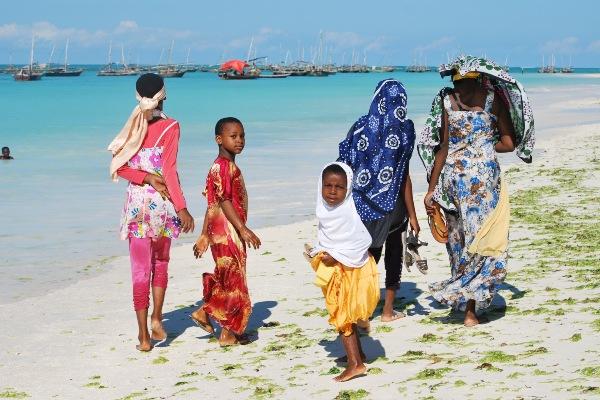
The Religion of Zarathushtra
Originating in Ancient Persia, the Zoroastrian faith was the very first of the great monotheist religions. Through its prophet Zarathushtra, it is believed that Zoroastrianism gave birth to the concept of heaven and hell, and the dual and conflicting forces of “spentamanus” (good) and “angramanus” (evil) continually jostling for supremacy among mankind.
Zoroastrian lives are dedicated to the pursuit of good, and the fulfilment of the three basic injunctions of their faith – good thoughts, good words and good deeds. Ingrained in the Zoroastrian religion and teachings is a profound respect for the environment and the elements. Fire has a great spiritual significance within the Zoroastrian religion, and is its symbol of worship. Zoroastrians worship at fire temples, whose focal point is a constantly burning holy fire, consecrated and tended by priests, around which prayers are chanted.
The rituals followed in consecrating the holy fire determine the status of any fire temple. The Zoroastrian concern for the environment is further evidenced by their method of disposing of the dead. Zoroastrians do not bury their dead, as this would contaminate the earth; nor are they cremated, as this would contaminate fire and air. Instead, Zoroastrians are laid to rest in towers of silence, which are large, round, open structures, generally built on elevated ground and set in tranquil gardens on the outskirts of the city.
Through the ages, Zoroastrians have generally sought to avoid political or military conflict. When Persia was invaded by Muslims in approximately 772 AD, making it difficult for Zoroastrians to freely practice their religion, some fled to India where they were granted ‘political asylum’. These Zoroastrians, now known as Parsees, have adopted elements of Hindu culture; their dress, language, food and customs resemble Hindu practice rather than that of their Zoroastrian counterparts who remained in Persia. Others sailed further, following trade routes to the shores of Zanzibar, bringing with them the customs of their religion. In some areas these were taken on even before the advent of Islaam, and still play a part in traditional festivals on the islands today, notably that of Mwaka Kogwa (see Annual Festivals).
Worldwide migration of the Zoroastrians has continued gradually over the centuries, and even today, Zoroastrians are migrating from their homes in search of greater prosperity and stability. Although there are still Zoroastrians in Iran, the majority have scattered around the world and can be found throughout the Indian sub-continent, America, Canada, Europe, Australia and Africa.
Also in July, usually around the 19th, the recently introduced cultural Festival of the Dhow Countries, or Zanzibar Film Festival (ZIFF) has now run for three consecutive years and gained great popularity and respect with each occasion. Each year it has been better organised and more richly attended by film-makers – and musicians from throughout the ‘Dhow Countries’ – a term used to describe any nationalities bordering the Indian Ocean and also the entirety of the African continent, despite the general lack of sea-faring borders of most of them.
The festival is centred around an administration centre in Stone Town, with the majority of film screenings and bands playing in the Old Arab Fort, although a number of other venues are also secured for simultaneous events around the town. Tourists pay a small fee for entrance to events or buy a pass for the entire festival, and locals are encouraged to attend free of charge. The majority of the films are cartoons or documentaries, often dubbed or subtitled, and these are then taken to rural regions of Zanzibar and shown in public screenings.
These inspire forthright discussion and feedback and have been popularly received. The musical aspect of the festival has also developed a very worthwhile and diverse playlist of performers, and the atmosphere in Zanzibar Town during this time is heightened immeasurably by the influx of talented musicians of all nationalities spilling out of every guest house and bar.
Key Dates in Zanzibar
Dates observed in the Muslim calendar are determined by the observance of the moon, and consequently, bear little synchronicity to the calendar year.
The Muslim festival of Ramadhan is strictly observed towards the end of the year or beginning of the New Year, as a mark of respect for the month in which Mohammed received the first of the Koran’s revelations. He was said to have received the first revelation on one of the twentieth days of the month, on a night known as The Night of Determination – this is said to be the night on which God determines the course of the world for the following year.

This is a devout month set aside for prayers and purity, and those following the Muslim faith fast between the hours of sunrise and sunset, and refrain from any act that may be considered a physical indulgence, such as eating, drinking of any kind, smoking, or sexual activity. Families and friends gather together after the sun sets to break their fast, and during this time the streets are oddly empty.
Christians and visitors to Zanzibar during this time are expected to respect the restraint of their fellow men, and not to eat, drink or smoke in public areas during the day. Most local restaurants will remain closed during the day for the duration of Ramadhan, and while those catering to the international market remain open as usual, they often screen any open sides from the street. Tourists are also advised to be cautious in exploring the streets of Stone Town between the hours of 6 pm and 8 pm, as it is thought that only undesirables and miscreants will be haunting the alleyways at this time.
The festivities of Idd el Fitr follow the rigours of Ramadhan, celebrations marked by prayers and feasting and the exchange of gifts – particularly the giving of alms to those less fortunate. Idd el Fitr is also often referred to as Eid or Sikukuu, which literally translates as days of celebration, or holiday, and lasts for four days.
Two months later comes Idd el Hajj, the traditional date for the annual pilgrimage to be made to Mecca. Three months later is the date of Maulid and associated celebrations in honour of the Prophet’s birthday.
Christian occasions such as Christmas and Easter are also celebrated and held as public holidays, as is the colourful Hindu Festival of Diwali.
The month of January is also highlighted with a traditional secular festival of dhow races. Hordes of Zanzibari fishermen compete to fulfil a route from Forodhani Gardens around Prison Island. Most of the races are played out in small ngalawa outriggers, and the collaborative energy of the event is supposed to chase away evil and bring good crop growth for the New Year.

